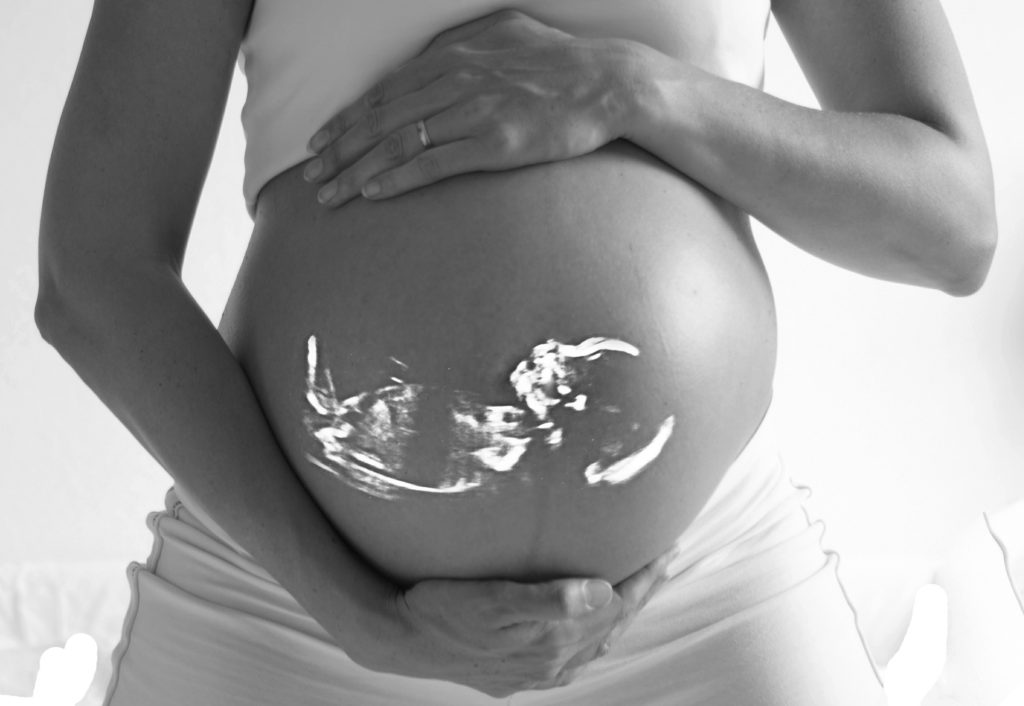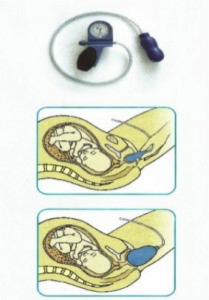
Pregnancy is not an illness, but some complication can change this happy event in a very challenging time… As well as giving birth can be the best day of your life or one of the worst.
A lot of these issues can be prevented with an adequate preparation. It’s also a great way to be in control of your pregnancy (reducing your stress!) and to give birth the way you wish by understanding exactly what your body and your baby are going through.
In fact, in France, primipara (women having their first baby) have 10 birth preparation sessions with a women’s health physiotherapist or a midwife. Unfortunately, no equivalent exists in the UK even with NCT classes. For these reasons, we offer one to one birth preparation session with one of our highly train women’s health physiotherapist, to palliate this lack and to give you the opportunity to have the best pregnancy possible!
Let’s review the common problems you may suffer from, during pregnancy/delivery and how birth preparation can help you to prevent/diminish these issues!
What are the common problems during pregnancy?
- Lower back pain are most of the time due to sacro-iliac joint (pelvis joint) inflammation with or without irradiation in your legs as a sciatica
- Pubic symphysis pain (maybe you had a SPD during pregnancy so you already know this pain!): You can feel a burning pain in between your legs, especially when closing or shearing your legs (walking or rolling over)
Osteopathy
What type of incontinence do you have ?
- Pregnancy hormonal changes slow down bowel activity creating constipation within the intestine.
- After giving birth, C-section scar, tear and episiotomy make it extremely painful to have a bowel movement. In this case, we speak about terminal constipation.
- Furthermore, pressure creating during labour lead to haemorrhoid and consequently painful bowel movement and again a terminal constipation.
- Finally, growing uterus push rectum backward creating an angle with the anus compromising stool expulsion.
Sport and pregnancy
What type of incontinence do you have
For urgency management and treatment:
How to manage urgency ?
Finally, a Video of a technique to manage urgency:
Thanks (not really) to your hormones, diameter of you veins increase. Furthermore, a new venous system develops for your baby and the weight of your growing baby press on the biggest vein of your body the vena cava.
The combination of these 3 elements prevents the blood to come back normally from your lower limbs to your legs, creating sensation of heavy legs, swelling or even varices.
During Birth Preparation session, your women’s health physio will give you advices and exercises to improve your blood return and reduce all the above inconveniences!
For more details about treatment, have a look below in the part about how birth preparation work.
How pregnancy change your body ?
What are the common problems caused by the delivery?
3 tips to prepare your pelvic floor for a good delivery
Abdominal rehabilitation
- Your transit will be slower
- Your blood circulation is weaker
- Your scar is painful and fragile
What is a c-section ?
What type of incontinence do you have
Anal incontinence is characterized by difficulty or incapacity to keep gas or stools. Throughout the pregnancy, baby is supported by a hammock composed of the pelvic floor muscles, which also surround urethra, vagina and anus. Consequently, pregnancy imposed important pressure on these pelvic floor muscles, stretching them and leading to their weakening.
During the labour, baby delivery as well as episiotomy or tear will stretch or cut the perineum from the vaginal part to the anal part. In some case, the tear can rip apart the external anal sphincter.
Continue below to read about how birth preparation reduce of such issue to occur or to learn more about anal incontinence mechanism, cause and treatment, you can read this article: What type of incontinence do you have?
- Genital pain caused by sexual intercourse are called Dyspareunies
- Involuntary contraction of perineal muscle preventing penetration is named Vaginisme
- Sometimes there is also an incapacity to have an orgasm which is called Anorgasmie
Your sex life after a baby
What are the common problems after giving birth?
Please have a look at our previous article about Pelvic Floor rehabilitation, giving all the details on what happen after birth and how to manage this beautiful but challenging moment: Why a pelvic floor rehabilitation is essential after every pregnancy
How birth preparation works and prevents/diminishes pregnancy issues?
3 Tips to prepare your pelvic floor for a good delivery
Top 8 Safe pelvis exercises you can do during pregnancy
Birth Preparation aims to empower you through a better understanding of what your body is getting through with anatomy and physiology notions.
Pregnancy is a changing time. It is a complete revolution for your body. Sometimes it’s comfy, some other you will wish you could give birth right away… It can be a great source of stress, especially if it’s your first baby and your discovering it all and if it’s your second or more, you also have stress/challenge to take care of the olders!
Therefore, within the birth preparation sessions our women’s health physio will explain you all these changes with advices on how to manage them to give you the possibility to have the pregnancy you dreamed of and to relax!
For more information about these changes:
How Does Pregnancy Change Your Body?
Our women’s health physio on top of explaining everything will also be able to answer your question and your concern, perfect to reduce your stress and putting you in control of your pregnancy!
Throughout the pregnancy, your belly and abdominal muscles are weaker and stretch to create space for your baby. When these abdominal muscles are too strong before the pregnancy or the belly developed too quickly, the linea alba between rectus abdominis (6 packs muscle) tears leaving a gap above and below your belly button. It is named Diastasis. To know if you have a diastasis, after giving birth, you have to lie down on your back with knees bend and feet on the floor. Put 3 fingers underneath your belly button and press gently. Raise your head, if your fingers are blocked, there is no diastasis. If your fingers go deeper, there is a diastasis. Warning: do it only once as the repetition of this test can increase the diastasis. To learn how to treat diastasis please have look at:
Abdominal rehabilitation
Unfortunately, all pain are not preventable during pregnancy and especially at the end of the third trimester, you may experience pelvic girdle pain and pubis symphysis pain. The most common ones are:
- Lower back pain are most of the time due to sacro-iliac joint (pelvis joint) inflamation with or without irradiation in your legs as a sciatica
- Pubic symphysis pain (maybe you had a SPD during pregnancy so you already know this pain!): You can feel a burning pain in between your legs, especially when closing or shearing your legs (walking or rolling over)
Unfortunately, with pregnancy you can’t take any drugs. Consequently, manual therapy provided by women’s health physiotherapist or our osteopath can help to attenuate or suppress these pains and help to prevent their recurrence with specific exercises.
We give some example here:
Top 6 exercises to avoid pelvic girdle pain during pregnancy
How birth preparation helps you to have a better delivery and diminish risk of tear/episiotomy?
Understand the different stages of the delivery it will reduce your stress and prepare you to react adequately to the different situation which may happen. After following birth preparation, you will know the different labour stages, material which can be use and the reasons (forceps, ventouse), and for each how to react adequately to have the closest delivery you to the one you wished for. It will also help you to prevent tear/episotomy by knowing how to react during the delivery!
You can already find information here:
What to expect for your delivery ?
A c-section is a surgical act. The surgeon will work in the Operation Room usually the patient is under local anesthesia but general anesthesia may be necessary. Baby will be born by an incision in the mother’s abdomen and uterus.
Our women’s health physio will teach you how to manage the consequence of the C-section.
What Happens following the C-section?
You could have a urinary catheter during 24h and a midwife will put you on an analgesic drip.
Obviously, don’t lift/carry heavy objects (heavier than your baby weight) for 40 days after the C-section. It means: NO buggy, carrycot,…
Don’t take a bath or go to the swimming pool during these 3 weeks to avoid any infection risk!
Your transit will be slower (you will have your first gas after 12 or 24 hours) and it will cause constipation which you can manage by using simple techniques.
Your blood circulation is weaker and it will be important to facilitate blood return (cf vascular gymnastic):
– Avoid sitting position during the first days to help the healings of the c-section scare
– Keep your leg raised and stand up very often.
Your scar is fragile:
Every time you cough, sneeze, laugh…, it will pull on the scar tissues and produce pain. To protect it, hold the scar with both hands to lift it.
For the first 3 weeks, put Mepiform on your scar. It is a silicone plaster and it will help the healing process and avoid ugly scar.
You also could put mother tincture of calendula or any scar reduction cream.
Start to massage your scar as soon as the edges of the wound are closed (21 days): Feel free to ask to your women’s health physio how to do it:
– At the beginning, convergent and slide movements
– Later, divergent and circular movements
– Much later, “palper rouler” and ventouse
Do not forget, even with a c section, you need to retrain your pelvic floor afterwards. And, obviously, take care of your abdominal muscles!
For more information:
What is a c-section ?
In birth preparation sessions, you will:
- Learn positions to help your baby to present himself correctly.
- Find your position to give birth
- Learn breathing technique to reduce contraction pain
- Learn breathing technique to help your baby to go out protecting as much as possible your abdominal and perineal muscles
You can already find some of these information here:
What to expect for your delivery ?
- How to use it?
- Slowly inflate the EPI-NO balloon to the point of stretching and comfort.
- Each day you will inflate and stretch a bit more.
- After the stretching phase (around 5 minutes), relax your pelvic floor muscles and allow the inflated EPI·NO balloon to gently expel itself from the vagina. This will familiarise you with the sensation of delivering the baby’s head.
- Do 4 cycles per session (20 min training)
- Optimum training is achieved when the balloon size has reached a diameter of 8.5 -10 cm (3-4 inches) and can be pushed out while inflated (usually after 3 weeks of training)
- There is no risk for your baby.

Pregnancy is only the first stage of a beautiful but challenging process. Knowing what will happen afterwards and how to react is a great asset. Therefore, part of the birth preparation is to teach you what will happen once you gave birth!
You can find all the information in our previous blog:
Why a Pelvic Floor Rehabilitation is essential after every Pregnancy?
This blog doesn’t intend to frighten you. Pregnancy is one of the most amazing moment of life and our aim is to help pregnant women to enjoy it as much as possible. We want to acknowledge all the potential pregnancy problems to empower women by increasing their understanding of their body and providing specific solution for each issue.
Unfortunately, too often our patients waited too long to Contact us only because they were not aware treatment existed for their problem.



